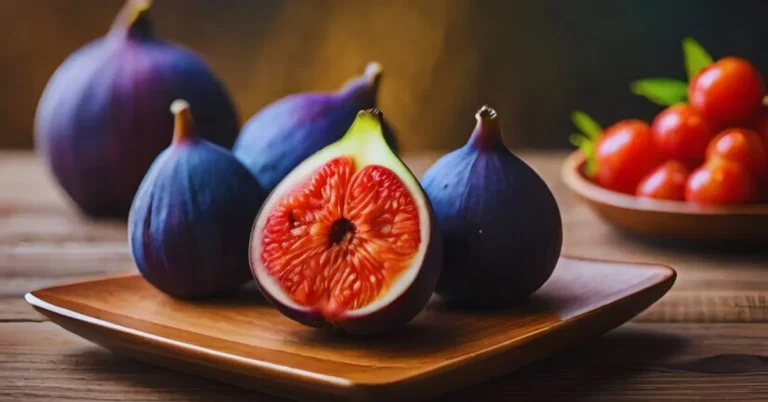Introduction to Figù
The figù, often celebrated for its unique flavor and versatility, is a fruit that holds a special place in both culinary traditions and cultural practices across the globe. With a rich history dating back thousands of years, the figù is not only a delicious addition to various dishes but also a symbol of prosperity and abundance. In this article, we will explore the figù’s origins, nutritional benefits, culinary uses, and cultural significance, demonstrating why this remarkable fruit deserves a spot in your kitchen and on your plate.
Origins and History of Figù
The figù, scientifically known as Ficus carica, is believed to have originated in the Mediterranean region, specifically in areas such as the Middle East and western Asia. Its cultivation can be traced back to ancient civilizations, including the Egyptians and Greeks, who valued the fruit for both its taste and health benefits. Figs were often associated with fertility and prosperity, making them a popular offering in religious rituals and a staple in the diets of those who revered them.
As trade routes expanded, the figù spread across Europe, Africa, and eventually to the Americas. Today, figù cultivation is prevalent in countries like Turkey, Iran, and the United States, particularly in California, which is known for producing high-quality figs. The fruit comes in various varieties, including the Black Mission, Kadota, and Adriatic figs, each offering unique flavors and textures.
Nutritional Benefits of Figù
One of the compelling reasons to incorporate figù into your diet is its impressive nutritional profile. Figù is not only delicious but also packed with essential nutrients. Here are some of the key benefits:
Rich in Vitamins and Minerals
Figs are an excellent source of vitamins A, C, and K, as well as several B vitamins. They also provide essential minerals such as potassium, magnesium, calcium, and iron. These nutrients play crucial roles in maintaining overall health, supporting the immune system, and promoting bone health.
High in Fiber
Figù is particularly high in dietary fiber, which aids digestion and helps maintain a healthy gut. A diet rich in fiber can prevent constipation, regulate blood sugar levels, and promote a feeling of fullness, which can be beneficial for weight management.
Antioxidant Properties
Figs are rich in antioxidants, which help combat oxidative stress in the body. Antioxidants can reduce the risk of chronic diseases and support overall health by neutralizing harmful free radicals.
Heart Health
The potassium and fiber content in figù contributes to heart health by helping to regulate blood pressure and cholesterol levels. Regular consumption of figs may lower the risk of heart disease and stroke.
Culinary Uses of Figù
The versatility of figù in the kitchen is one of its most appealing aspects. This fruit can be enjoyed fresh, dried, or even cooked, making it a valuable ingredient in a variety of dishes.
Fresh Figù
Fresh figù can be enjoyed on its own or added to salads for a burst of sweetness. Pairing fresh figs with cheese, such as goat cheese or blue cheese, creates a delightful contrast of flavors. A simple salad with arugula, fresh figs, walnuts, and a balsamic vinaigrette is a perfect summer dish.
Dried Figù
Dried figù is a popular snack and can be used in baking or cooking. They add natural sweetness to muffins, breads, and granola. Dried figs can also be chopped and incorporated into savory dishes, such as stews and tagines, adding depth and richness.
Figù Jam and Preserves
Making figù jam or preserves is a great way to enjoy the fruit’s flavor year-round. The natural sweetness of figs pairs wonderfully with spices like cinnamon and ginger. Spread figù jam on toast or serve it alongside charcuterie for an elegant appetizer.
Figù in Desserts
Figs can elevate desserts with their unique taste and texture. They can be used in tarts, crumbles, and ice creams, adding an unexpected twist to classic recipes. Roasting figs with honey brings out their natural sweetness, making them a delightful topping for yogurt or pancakes.
Cultural Significance of Figù
Beyond its culinary uses, the figù holds cultural significance in various traditions. In many Mediterranean cultures, figs symbolize abundance and fertility. They are often used in religious rituals and celebrations, representing prosperity and good fortune.
Figs in Literature and Art
Throughout history, figs have been depicted in art and literature, symbolizing love and sensuality. Ancient texts often reference figs as a symbol of abundance and fertility, reflecting their importance in society. Today, figs continue to inspire artists and writers, capturing the imagination of those who appreciate their beauty and flavor.
Figs in Religious Practices
In some religious traditions, figs are considered sacred. For example, in Christianity, figs are mentioned in the Bible, symbolizing prosperity and growth. In Islam, figs are also regarded as a blessed fruit, mentioned in the Quran as a source of nourishment.
Also Read: Cannoli_Queen Amanda LaBollita: The Sweet Legacy of a Dessert Icon
Conclusion
The figù is more than just a delicious fruit; it is a testament to the rich tapestry of culinary and cultural history. With its impressive nutritional benefits, versatility in cooking, and deep-rooted significance in various traditions, the figù deserves a place in your pantry and on your table. Whether enjoyed fresh, dried, or in a variety of dishes, the figù is a fruit that continues to delight and inspire, making it a true gem in the world of gastronomy.


